#byzantine history
Text

I started reading Roland Betancourt's Byzantine Intersectionality because it has a chapter on transwomen, but it turns out that the book is heavily focused on transmasculinity and race in the Byzantine world.
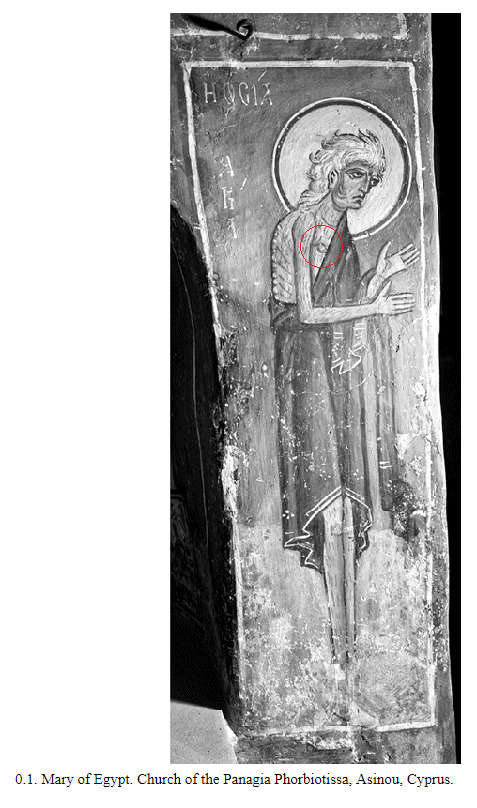
Specifically I wanted to show you this discussion on artistic representation of top surgery and the likelihood that this actually represents top surgery.
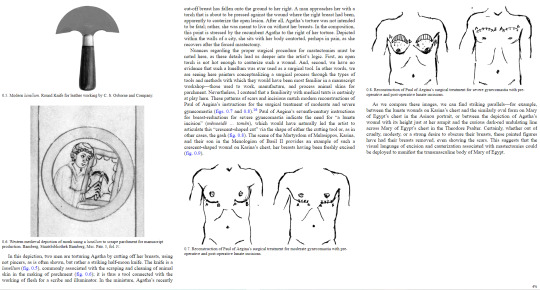
Anyway this is really fucking cool
4K notes
·
View notes
Text
When the Varangians honoured the woman who killed her near-rapist
The Varangian Guard (Greek: Τάγμα τῶν Βαράγγων, Tághma tōn Varángōn) was an elite unit of the Byzantine Army from the tenth to the fourteenth century who served as personal bodyguards to the Byzantine emperors. The Varangian Guard was known for being primarily composed of recruits from northern Europe, including mainly Norsemen from Scandinavia but also Anglo-Saxons from England. The recruitment of distant foreigners from outside Byzantium to serve as the emperor's personal guard was pursued as a deliberate policy, as they lacked local political loyalties and could be counted upon to suppress revolts by disloyal Byzantine factions.
The Byzantines had mixed feelings about them, on one hand considering them barbarians and brutes with too much love for alcohol, on the other hand admitting their fierce loyalty to the emperor and their military prowress. They never fled a battle and they would fight to their death. They were also considered fair traders in their transactions between the Byzantine Empire and their northern homelands.
One incident which took place in 1034 helped soldify a positive image of the Varangians to the Byzantines' eyes, so much that the Byzantine Greek chronicler Ioannis Skylitzis, described it in his works as "αξιαφήγητον" (axiaphíyiton, worthy of mentioning / narrating).
According to Skylitzis, a group of Varangians were transferred in the Thracesian Theme (Greek: θέμα Θρᾳκησίων, thema Thrakēsiōn), a military division that at the time encompassed west Asia Minor (not Thrace). One of them once encountered a local woman in an uncrowded place. The man approached the woman suggestively but she rejected his advances. The man attempted to rape her and she seized his sword and killed him. His death was instant as she pierced him through his heart.

Art in Skylitzis' manuscript where the woman is erroneously depicted to kill the man with a spear instead of a sword.
Once the incident became known in the area, the Varangians made a gathering in which they agreed to honour the woman for killing their companion. They offered her all the valuable belongings of the killed Varangian, whom they left unburied. According to Varangian law, the rapists of married women were punished with execution, therefore the Varangians reasoned that the woman simply implemented the law by killing their companion.

The manuscripts of Skylitzis are kept in the National Library of Madrid.
Sources:
ΜΗΧΑΝΗ ΤΟΥ ΧΡΟΝΟΥ
www.in.gr
#history#byzantine empire#east roman empire#byzantine history#varangian guard#greek history#ioannis skylitzis
511 notes
·
View notes
Text

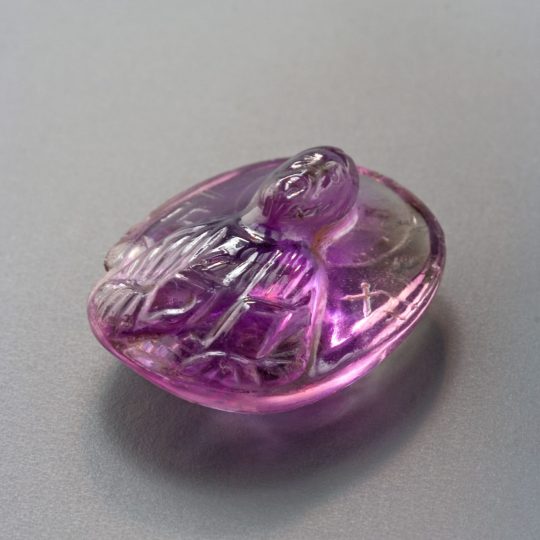
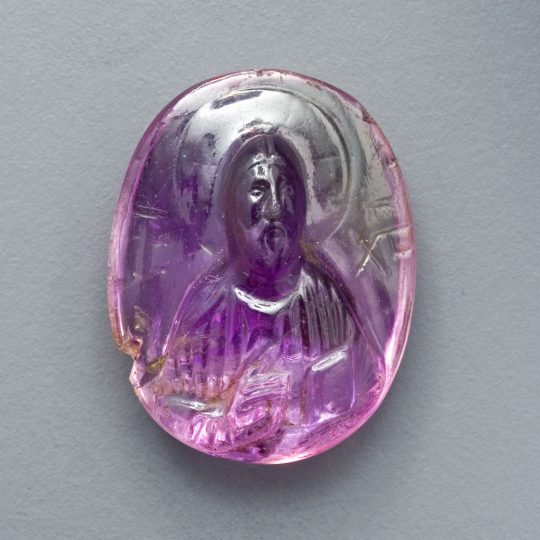
Byzantine Amethyst Cameo of Christ Pantokrator
Byzantine · 11th - 12th century A.D.
#Byzantine Amethyst Cameo of Christ Pantokrator#11th - 12th century A.D.#amethyst#ancient artifacts#archeology#archeolgst#history#history news#ancient history#ancient culture#ancient civilizations#byzantine history#byzantine empire#byzantine art
129 notes
·
View notes
Text
Very fond of the new trend of calling the Later Eastern Roman Empire AKA the "Byzantine" Empire the New Roman Empire.
It differentiates it enough from the classical Roman Empire centered on Rome itself without denying its "romanness".
Also, the original name of Constantinople was Nova Roma (lit. New Rome) so its fitting to call the Roman Empire centered around the city the New Roman Empire.
61 notes
·
View notes
Text
Round 1: Match 14
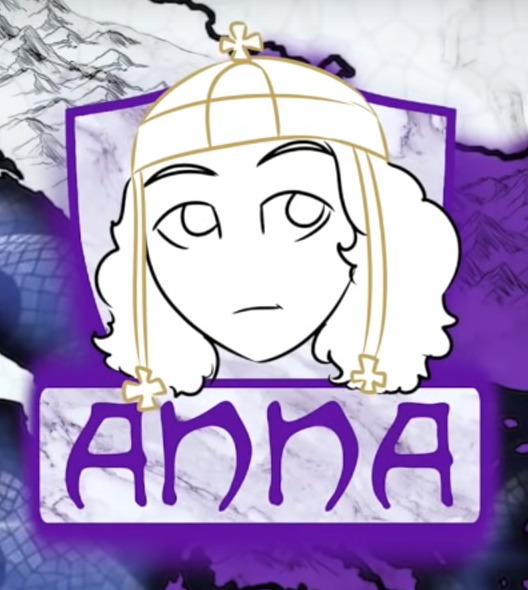

Video Links:
Anna Komnena
Ishtar
#overly sarcastic productions#osp#overlysarcasticbracket#anna komnena#byzantine history#ishtar#babylonian mythology#polls#round 1
68 notes
·
View notes
Text

Gold necklace, Byzantine, circ 500-550 AD
from The Penn Museum
#history#antiquities#art#jewelry#jewellery#historic jewelry#byzantine#byzantine art#byzantine history
102 notes
·
View notes
Text
In my upper level college Religious Studies classes there was a conversation that we at the start of every course. To the degree that it felt more like a ritualistic chant than a discussion. Over the years I’ve collected a few others of this type of academic chant.
1. Religious Studies
Teacher: “Does such a thing as religion really exist?”
Students: “No! It’s a label we put on a collection of beliefs and practices.”
2. Fashion History
Teacher: “Why has fashion history been a marginal part of art history?”
Student: “Misogyny!”
3. Byzantine History
Teacher: “When does Roman history end and Byzantine history begin?”
Students: “Trick question! There’s no difference.”
#history#fashion history#Byzantine history#I’m not saying you have to agree just that I’ve observed it
27 notes
·
View notes
Text
Where is my Song of Achilles style historical romance novel where Procopius and Belisarius are lovers and that’s why they’re following each other through every war Justinian sends them on?
Where is it? I want to read it-
#antiquity#byzantine history#history#ancient history#let them be gay okay all Procopius does is talk about how great and brave and important belisarius is let them smooch or something
24 notes
·
View notes
Note
Patrochilles this and that but I see no people getting fixated on an actual real queer couple that is Hadrian and Antinous.. 👀
ΩΠΑ 😲 Good call! Okay the couple is later compared to "Patrochilles" however it was a real couple, and Antinoos was Greek (well, and Hadrian of the Italian peninsula but I focused on Antinoos cause Greece babyyy). Of course we can still speculate about other couples but I love it when real ancient same-sex couples are centered!
At this point I have another story about a possible same-sex real couple to tell:
In the spring of 390 A.D. emperor Theodosius published a law punishing homosexuality with death. Based on this text, the Goth general Buthericus of Thessaloniki imprisoned a popular rider (a sports star of the era), accusing him of pederasty. Archaeologist Thodoros Papakostas said that this rider had a relationship with the son of the Goth general, and this was the general's way of getting rid of him.
The people of Thessaloniki were enraged when the general didn't want to release the rider, and they revolted. In this stasis (revolt) the Goth general was killed. (At the time there was lots of tension because of the Goths in Thessaloniki) Then emperor Theodosius ordered the army to surround the Thessalonian Hippodrome and slaughter all the spectators. He repented of the order, but its revocation reached Thessaloniki after 7,000 citizens had been slaughtered.
11 notes
·
View notes
Text
I was so right in those tags. Belisarius attracts the same kind of fans as Mustafa and it's a problem.
11 notes
·
View notes
Text
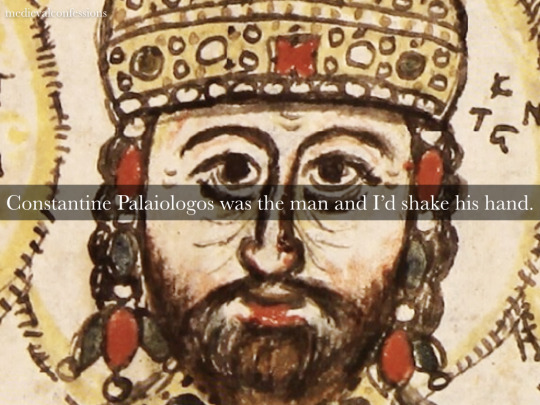
22 notes
·
View notes
Text
TIL from a podcast featuring historian and Byzantine archaeologist Yannis Theoharis:
Athens was one of the most religiously conservative cities of the Byzantine Empire. It adhered to the ancient Greek religion for longer than most other areas. Contrary to popular belief, its eventual conversion to Christianity did not happen violently. Christianity was getting more and more ground amongst the believers progressively. Meanwhile, the ancient temples and shrines were progressively emptying but as long as there were believers they were functioning properly and had guards and went through restoration works and all, as stated by Neoplatonic philosopher Proklos (with the exception of nude sculptures which had been destroyed already by proto-Christians). The historian also claims the conversion of the temples to churches happened later than what was previously believed, around the 7th-9th centuries. As the vast majority of the population had eventually converted to Christianity, the temples were left abandoned. The empire ordered their conversion to churches so that funding their preservation could be justified. Furthermore, there wasn’t as much of violent banning of ancient schools as it was thought. Justinian did not ban the function of the Neoplatonic school in Athens but ceased the state funding unless the school accepted to add Christian theology to its curriculum. The Neoplatonic school refused but it was not banned. It kept functioning using its own private funds until this wasn’t enough and the school had to close. Evidence for this is that it is documented that the school functioned for several decades or more than a century (don’t remember exactly) after Justinian’s imperial command, which was previously viewed as an immediate or violent shutdown. Meanwhile, the Neoplatonic school in Alexandria (in Egypt) agreed to add Christian theology to its curriculum and it kept functioning undisturbed until the 7th century and the Arab conquest.
Also, he has more insight into the similarities observed between Eastern / Greek and even all Orthodoxy and the Ancient Greek religion, such as idol / icon worship, lesser deity / saint worship, virgin female deity / super saint worship, patron gods / saints etc He says there was an interesting cycle of Christianised Hellenism followed by Hellenized Christianity. Some of these elements of Christian Orthodoxy were emphasized more than in the early years of Proto-Christianity or even exaggerated by the Byzantine Greek Christians in order to attract the pagan Greeks and make them understand more easily the philosophy of the new religion and find common ground between them. It worked.
Lastly, he disputed the dated assumptions that the Visigoth king Alaric I was assisted by monks to destroy Athens during his invasion in 396. This was falsely concluded because in documents it was found that Alaric was accompanied by men clad in black. Theoharis says these were actually Thracian soldiers (Alaric indeed fared long in Thrace and the Thracians were by large mercenaries) and supports it is very unlikely based on historical evidence of the time that Athenian or Greek Christians would collaborate with a Visigoth invader to help him destroy historical areas of Athens, even if they were pagan.
These are the most important bits from memory, I am linking the podcast here, it is in Greek.
#Greece#Europe#history#Greek history#Byzantine history#Christian orthodoxy#Ancient Greek religion#Greek orthodoxy#Eastern Orthodoxy#Byzantine empire#eastern Roman Empire#justinian#Alaric I#proklos#neoplatonism#Athens#attica#central Greece#Sterea Hellas#mainland
86 notes
·
View notes
Photo

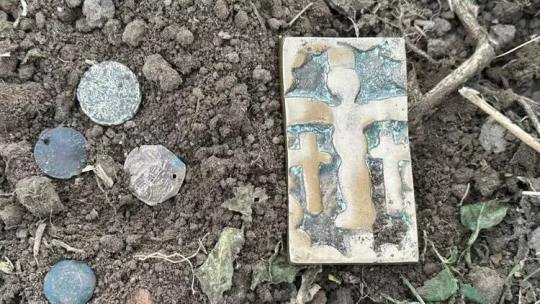
1,500-year-old Byzantine Artifacts Found Under a Peach Orchard in Turkey
In the world-famous historical city of Iznik, which was the capital of four civilizations, a farmer found coins and historical artifacts in his peach orchard. The artifacts are believed to belong to the 1,500-year-old Byzantine period.
Özkan Yılmaz, a farmer, artifacts found in the orchard that resemble a tablet with a cross and figures of children on them.
“Iznik has been the capital city of four civilizations and such historical pieces are proof that our land is full of historical treasures. I was digging for peaches here and came across a shining object with some small coins next to it. I was surprisingly happy and excited when I realized what these objects are,” said Yılmaz.
Yilmaz said that he will deliver the historical artifacts to the museum as they enhance national history, and believes it is a moral duty to preserve treasures.
İznik is a city on the eastern shore of the same-named lake and is 86 kilometers (km) northeast of Bursa. Iznik was built between olive groves, vineyards, and orchards and is encircled by 2,000-year-old walls that are about 5 km long. The Cicekli, Karadin, and Cakırca mounds, which are close to the city, contain the remains of a civilization that existed 2,500 BC. The established settlements was named as ‘Helikore’ before the migration of Thracian tribes in the 7th century BC Khryseapolis (Gold City) name is read on the printed coins.
The city is renovated by Macedonian emperor Alexander’s general Antigonus in BC 316 years and the city is referred as Antigoneia. After the death of Alexander, the battle between Antigonus and the generals Lysimakhos is resulted with Lysimakhos’victory and he named the city after his wife Nicaea – the daughter of Antipatros.
An important city in early Christian history, İznik (known in ancient times as Nicaea) was the site of the First and Second Councils of Nicaea. These councils established key tenets of Christianity such as the Nicene Creed and sainted how Christians should interact with icons.
By Oguz Kayra.
#1500-year-old Byzantine Artifacts Found Under a Peach Orchard in Turkey#archeology#archeolgst#ancient artifacts#history#history news#ancient history#ancient culture#ancient civilizations#historical city of Iznik#byzantine#byzantine history
74 notes
·
View notes
Text
Next is the Empress Theodora of Byzantium:
Empress Theodora was and is one of the main figures of Byzantine history, and of the Empire in its glory days. Like Queen Isabella of Castile she was both partner to her husband, the Emperor Justinian, and all of his brain cells. When she died, so died the glory of Justinian and of the great Byzantine state. She was also liable to various libels by the historian Procopius for her main offense, political success while female. She was controversial for the same reason that other women like her were, that in reality women very much did exercise power and influence no matter what ideology said, but since ideology mattered just as much to ancient historians as modern it became easy to believe a set of lies and bullshit that may or may not have had a grain of truth, but when the lies converge on the same territory it also hinges on the view that the historians of times past both had and used double-standards.
#lightdancer comments on history#women's history month#medieval history#byzantine history#empress theodora
2 notes
·
View notes
Text
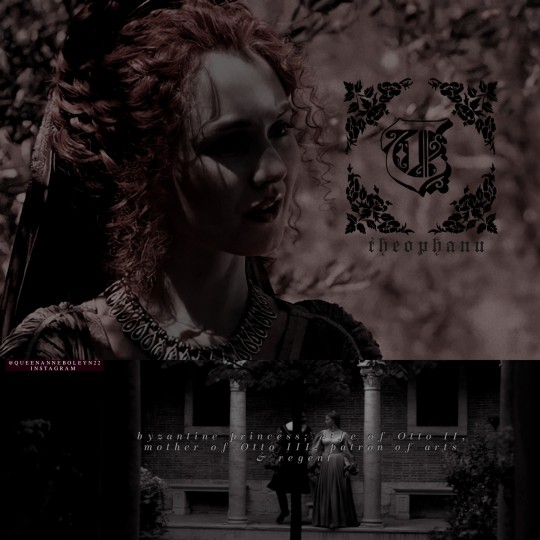
Theophanu was a Byzantine noblewoman, whose uncle acceded to the throne. That she was not herself of imperial descent, not born to the purple (porphyrogenita), but a niece of the man who had taken over the throne in a coup (John Tzimiskes), was a source of disappointment to some when she married the son of Otto I. But Theophanu had been educated to play a role in an imperial court. She was personally impressive and intelligent and she participated in her husband’s government, traveling with him, the court had no fixed center , even on military campaigns.They had five children, of whom four survived: Otto III, Adelaide, Sophia and Matilda. When Otto II died in December 983, Theophanu served as regent for their son, Otto III, at first sharing the regency with her mother-in-law, empress Adelaide, but eventually taking over on her own.
Though she had differences with her mother-in-law, empress Adelaide, some of them inherited from her husband, the two worked together to secure the throne for Otto III from his cousin, Henry II of Bavaria (“the Wrangler”), who had proclaimed himself king. Theophanu died in 991, still in her 30’s.The chronicler Thietmar eulogized her as follows: "Though [Theophanu] was of the weak sex she possessed moderation, trustworthiness, and good manners. In this way she protected with male vigilance the royal power for her son, friendly with all those who were honest, but with terrifying superiority against rebels."
- S: Communications and Power in Medieval Europe, The Carolingian and Ottonian Centuries, ed. Timothy Reuter, (London: Hambledon, 1994),
#perioddramaedit#history#edit#history edit#byzantium#byzantine empress#byzantine history#byzantine empire#byzantine#Theophanu#otto iii#alana boden#carolingian#ottonian#8th century#women of history#historyedit#john Tzimiskes#historical women#historical figures#byzance#empress Theophanu#historical#emperor otto#perioddramasource#perioddramacentral#userthing#userbbelcher
78 notes
·
View notes